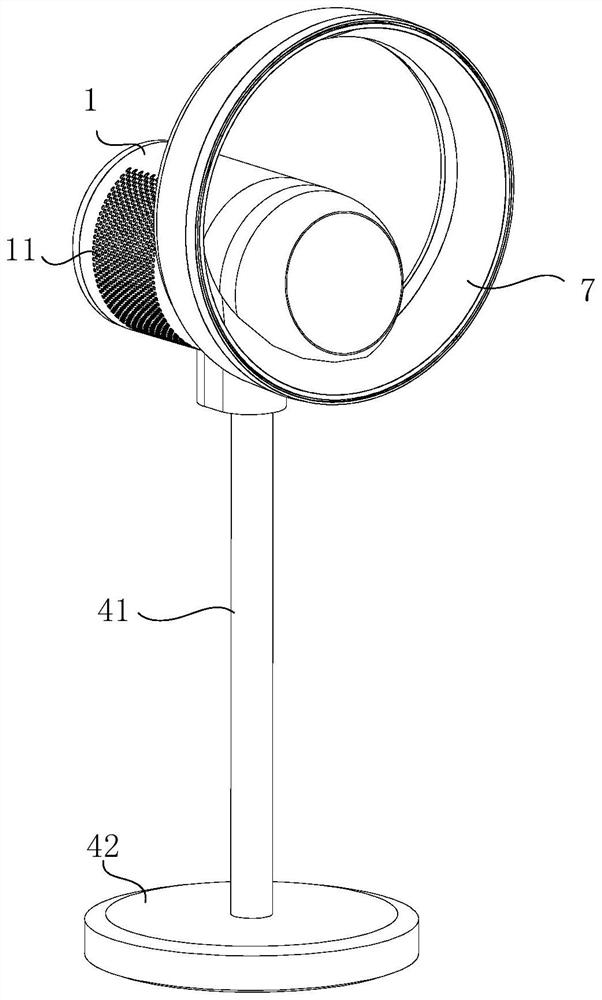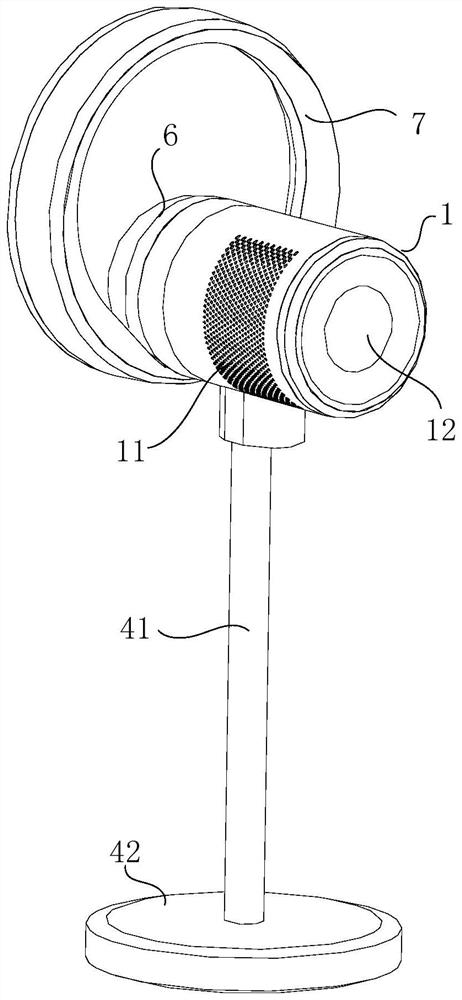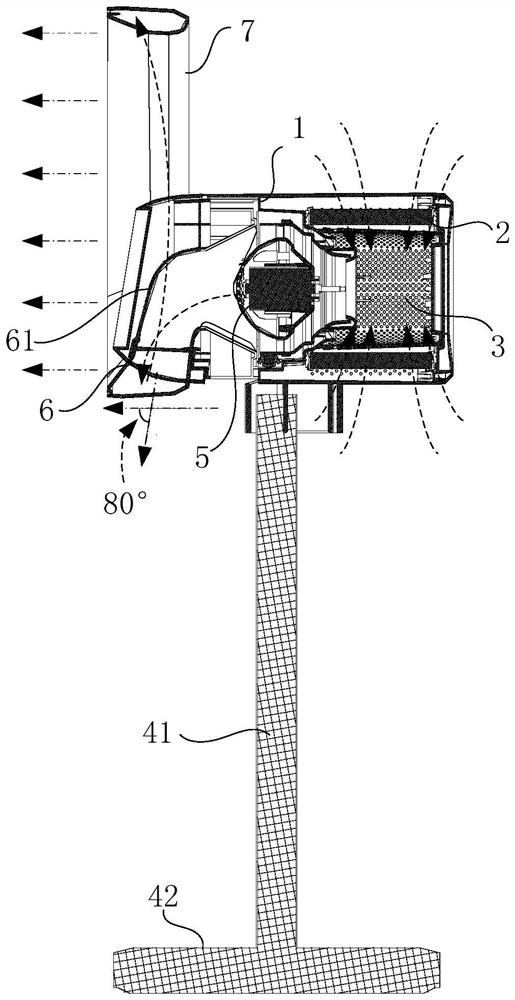Fan
A fan and fan motor technology, applied in the direction of ventilation system, space heating and ventilation, heating and ventilation hood/cover, etc., can solve the problems of large air volume in the lower part of the nozzle blowing, lower air quality, and small air volume in the upper part, etc., to improve the user Experience and expand the effect of usage scenarios
- Summary
- Abstract
- Description
- Claims
- Application Information
AI Technical Summary
Problems solved by technology
Method used
Image
Examples
Embodiment Construction
[0048] Example embodiments will now be described more fully with reference to the accompanying drawings. Example embodiments may, however, be embodied in many forms and should not be construed as limited to the embodiments set forth herein. Rather, these embodiments are provided so that this disclosure will be thorough and complete, and will fully convey the concept of the example embodiments to those skilled in the art. The same reference numerals denote the same or similar structures in the drawings, and thus their repeated descriptions will be omitted.
[0049] figure 1 It is a perspective view of the first viewing angle of the fan of the present invention. figure 2 It is a perspective view of the second viewing angle of the fan of the present invention. image 3 It is a side sectional view of the fan of the present invention. Such as Figures 1 to 3 As shown, the fan of the present invention includes: an integral part 1 , a support 41 , a base 42 and a nozzle 7 . Th...
PUM
 Login to View More
Login to View More Abstract
Description
Claims
Application Information
 Login to View More
Login to View More - R&D
- Intellectual Property
- Life Sciences
- Materials
- Tech Scout
- Unparalleled Data Quality
- Higher Quality Content
- 60% Fewer Hallucinations
Browse by: Latest US Patents, China's latest patents, Technical Efficacy Thesaurus, Application Domain, Technology Topic, Popular Technical Reports.
© 2025 PatSnap. All rights reserved.Legal|Privacy policy|Modern Slavery Act Transparency Statement|Sitemap|About US| Contact US: help@patsnap.com



